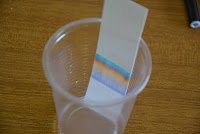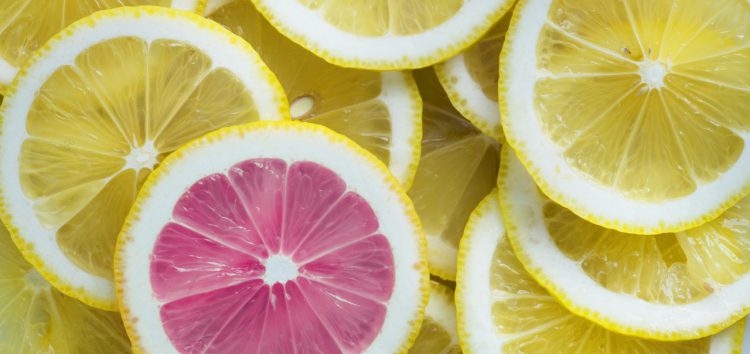I struggle at the start because I didn't remember but when I did I had it in the bag. This was easy once I got it I could complete one question in a few seconds. This was really fun to learn cause I had fun with my group.
Thursday, April 11, 2019
W.A.L.T:Round numbers to the nearest 10,100,1000
For the week I have been learning Round numbers to the nearest 10,100,1000, I have learnt this before but it was a good way to refresh my brain.
I struggle at the start because I didn't remember but when I did I had it in the bag. This was easy once I got it I could complete one question in a few seconds. This was really fun to learn cause I had fun with my group.
I struggle at the start because I didn't remember but when I did I had it in the bag. This was easy once I got it I could complete one question in a few seconds. This was really fun to learn cause I had fun with my group.
Tuesday, April 9, 2019
Home chemistry 3.
Aim: To see which chemical
the mix creates the most gas.
Hypothesis: (What do I think will happen)
I think that the vinegar and baking soda will make the bigger balloon.
Materials:
the mix creates the most gas.
Hypothesis: (What do I think will happen)
I think that the vinegar and baking soda will make the bigger balloon.
Materials:
- Vinegar ½ cup
- baking soda 3 tsp
- salt 3 tsp
- soda water ½ cup
- yeast 2 tsp
- sugar 1 tsp
- x 3 bottles
- x 3 ballons
- funnel
Steps:
Findings:
Balloon 1
( 3 tsp baking soda, ½ cup vinegar)
|
Balloon 2
( 3 tsp salt, ½ cup soda)
|
Balloon 3
( 2 tsp yeast, 1 tsp sugar )
| |
Balloon Size (cm)
| 14.7cm | 8.6 | 12.8 cm |
Bubbles
| small amount | small amount | large amount |
conclusion:
My hypothesis was correct that the baking soda and vinegar created the biggest balloon. It was really cool to see the baking soda go into the vinegar and fill up the ballon.
At the end of it, all the balloons were different coloured and they were all different sizes. The smallest was the salt and soda water was the smallest it is very interesting how different the size is.
I learned that gas can fill a balloon. I also learnt that the largest balloon makes less amount of bubbles.
Monday, April 8, 2019
Lost storyboard
So we worked in groups of four to create a storyboard. I worked with Emily, Maia, Lucy, Heaven and Jasmine. But before we did that we picked something out of the brainstorm that other people did.
Friday, April 5, 2019
Home chemistry 2.
Aim: To separate colours by using the process of chromatography.
Definition: Chromatography is a method of separating out materials from a mixture.
Eg. blood, ink, drugs,
Scenario
Scenario
A crime has been committed. The police have a signed cheque and a letter from the same crime scene but it seems like the handwriting is different. They have 3 suspects but not enough evidence. They need to know if the letter and the cheque were written by the same person.
How do they tell if the pens used for both of these pieces of evidence are the same?
How do they tell if the pens used for both of these pieces of evidence are the same?
Rainbow paper
Materials;
1. Cup
2. Felt pens
3.Chromatography paper
Process:
Step 1: Get Chromatography paper and a cup
Step 2: Draw line with pencil 1cm from the edge
Step 3: Pick two colours (preferably dark)
Step 4: add water and watch
Conclusion: What have I learnt from this experiment?
I learnt that if you add felt to Chromatography paper with water it will go up. I also learnt that the colour will change colour as it goes. My group picked two colours green and dark blue. The dark blue turned purple then went blue. Then the green went green to blue. This was a really cool experiment and I want to do it again. But maybe in other colours. Maybe with lighter colours and see what happens.Aim: To separate colours from skittles by using the chromatography.
 Materials;
Materials;2. petri dish
3. water
Process:
Step 1: get a petri dish
Step 2: get skittles
Step 3: put skittles in petri dish
Step 4: add water to petri dish and watch.
Conclusion: What have I learnt from this experiment?
That if you add water to skittles it will get the colours out of it. The skittles loses its colour and goes white. I learnt that skittles taste disgusting if they are wet. Also, the water is disgusting. It was really fun. I would want to do this again cause of the skittles.
Home chemistry 1.Introduction
Aim: To learn the names of 10 household chemicals and identify if they are a solid, liquid or a gas.
Definitions:
- Element; A single form of a chemical
- Compound: A mixture made up of 2 or more elements
- Reaction: A process in which chemicals mix together to form a new substance.
- Mixture: When two or more elements are mixed together.
Equipment:
1) Salt
2)Lemon juice
3)Sugar
4)Vinegar
5)Lemonade bubbles
6)onion gas
7)Baking soda
8)Milk
9)Flour
10)Banana
Steps:
1.aim
2.step
1.aim
2.step
3.materials
4.conclusion
Repeat the steps for all the chemicals.
Repeat the steps for all the chemicals.
Task 1: Put the 10 chemicals in a chart with the titles - Name, Chemical ingredient(s), Image, Solid/Liquid/Gas.
Name | Chemical | Images | Solid/Liquid/Gas |
Salt
Lemon juice
Sugar
Vinegar
Lemonade bubbles
onion gas
Baking soda
Milk
Flour
Banana
|
Sodium Chloride
citric acid
monosaccharides
acetic
carbon dioxide
syn-ropanethial-S-oxide
sodium hydrogen carbonate
magnesium hydroxide
amylose
potassium
|
Solid
liquid
solid
liquid
gas
gas
solid
liquid
solid
solid
|
CONCLUSION: ( WHAT DID YOU LEARN OR SEE)
I learnt that salt I know the rules in a lab. I've learned that you have to listen so you know what to do. I learnt that salt is Sodium Chloride and it's solid. I've learned that a lot of products that I use at home are named a lot of other things. I also learnt that bananas are potassium. I also learnt really big names. I learnt that sodium chloride is solid. I also learnt that milk is magnesium hydroxide. I also learnt that onion is a gas. I also learnt that vinegar is acetic.
Labels:
2019,
Home chemistry,
introduction,
Term 1,
week 10
Subscribe to:
Posts (Atom)





